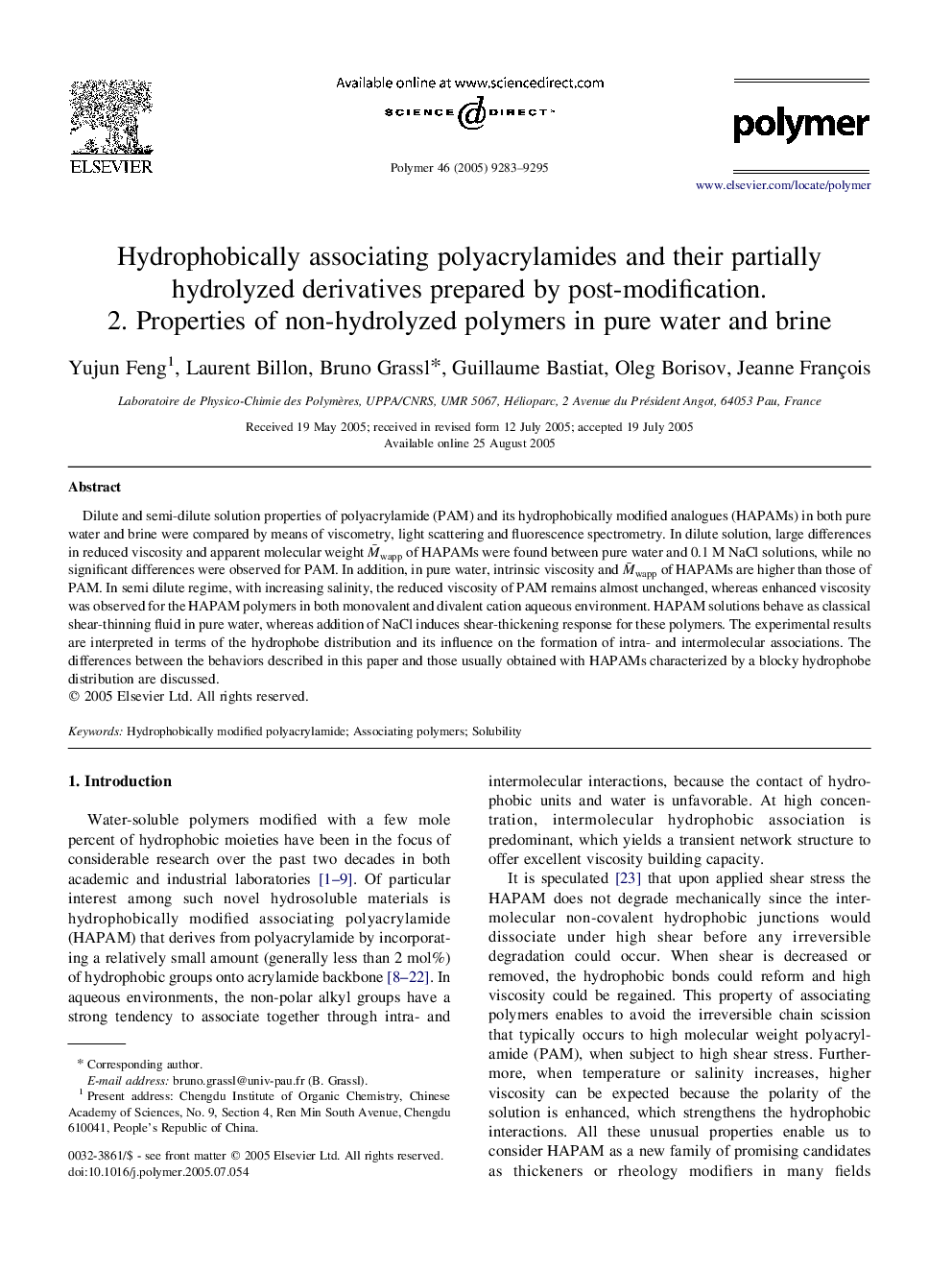| Article ID | Journal | Published Year | Pages | File Type |
|---|---|---|---|---|
| 5190432 | Polymer | 2005 | 13 Pages |
Abstract
Dilute and semi-dilute solution properties of polyacrylamide (PAM) and its hydrophobically modified analogues (HAPAMs) in both pure water and brine were compared by means of viscometry, light scattering and fluorescence spectrometry. In dilute solution, large differences in reduced viscosity and apparent molecular weight M¯wapp of HAPAMs were found between pure water and 0.1 M NaCl solutions, while no significant differences were observed for PAM. In addition, in pure water, intrinsic viscosity and M¯wapp of HAPAMs are higher than those of PAM. In semi dilute regime, with increasing salinity, the reduced viscosity of PAM remains almost unchanged, whereas enhanced viscosity was observed for the HAPAM polymers in both monovalent and divalent cation aqueous environment. HAPAM solutions behave as classical shear-thinning fluid in pure water, whereas addition of NaCl induces shear-thickening response for these polymers. The experimental results are interpreted in terms of the hydrophobe distribution and its influence on the formation of intra- and intermolecular associations. The differences between the behaviors described in this paper and those usually obtained with HAPAMs characterized by a blocky hydrophobe distribution are discussed.
Related Topics
Physical Sciences and Engineering
Chemistry
Organic Chemistry
Authors
Yujun Feng, Laurent Billon, Bruno Grassl, Guillaume Bastiat, Oleg Borisov, Jeanne François,
